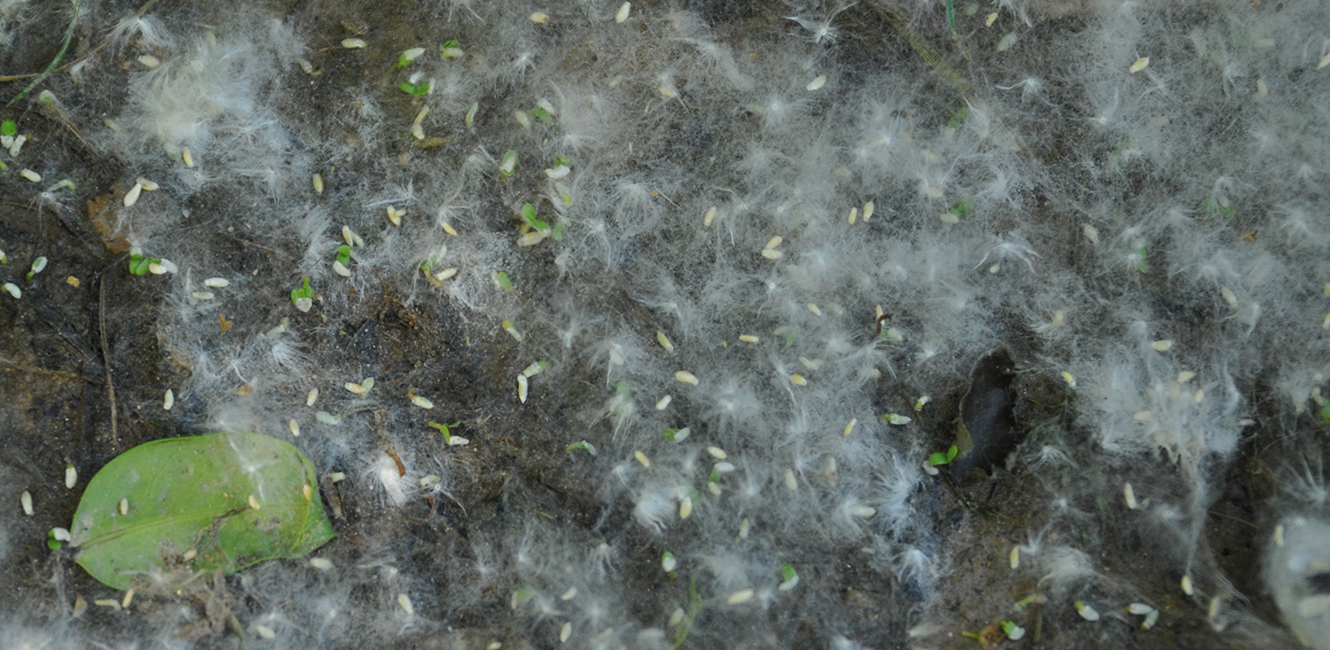The Albany City Forester addressed fire concerns in a 6/6/2025 post on the City of Albany SeeClickFix app. The following is included in its entirety for information. Please contact Department of General Services for any clarifications or questions. Buckingham Pond Conservancy assumes no responsibility or liability for any errors or omissions in the content.
The minor fire that broke out on the northwest corner of Buckingham Pond on May 29, 2023 was the result of arson by a few teenagers lighting cottonwood “cotton” on fire. While it was persistent, it was more of a nuisance than a hazard per se.
That May was unusually dry, with less than half of inch (.33”) of rain falling in the preceding three weeks. The abundant supply of dry cottonwood “cotton” that year served as the initial fuel, but the biggest challenge was posed by standing deadwood and hollow trees rather than logs on the ground.
Standing dead trees can act as ladders allowing fire to climb into the canopy. They can also produce embers that travel on the wind and spread the fire elsewhere. This is one of the reasons why DGS Forestry often fells standing dead trees/snags in minimally maintains/wild park areas despite the important habitat they can provide. Once on the ground, logs and other deadwood are often referred to as Course Woody Debris (CWD). CWD acts like a sponge, wicking up and retaining moisture and is quickly colonized by fungi. CWD provides many environmental benefits, including returning carbon and nutrients to the soil; serving as a seedbed and providing shade for young plants, and creating habitat for a host of animals. In a location like Buckingham Pond, where humidity levels are constantly high, CWD makes very poor fuel.
I can understand your concerns about fire after last November’s Jennings Creek-Sterling fire in Orange County. But you have to understand that weather, forest structure, fuel condition, and vegetation composition interact with location to determine a fire’s severity. Fire behaves differently in different forest cover types. Deciduous stands like those in and around Buckingham Pond act as natural fuel breaks. Because of the usual absence of ladder fuels in deciduous stands, fire does not get carried to the high crowns of these trees. High crown base height, higher moisture content of the leaves and stems, and tight, smooth bark of deciduous trees resist intense fire behavior.
What drove the Jennings Creek fire was the abundance of standing deadwood. Emerald Ash Borer (EAB) has killed millions of forest trees while at the same time Beach Leaf Disease (BLD) and Beech Bark Disease (BBD) are combining to kill beech trees in downstate forests at an alarming rate. As these trees die the once shaded forest floor receives much more sunlight and begins to dry out, further altering the forest and making it more vulnerable to fire.
There are a few small ash trees around Buckingham Pond, but nothing to be concerned about and the nearest beech is a few blocks away at the dead end of Colonial. So we don’t have to worry about those impacts in Buckingham Pond’s woods.
Image Credit: EnLorax G. Edward Johnson, CC BY 3.0 <https://creativecommons.org/licenses/by/3.0>, via Wikimedia Commons

